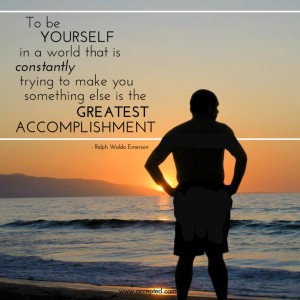Recently we offered 9 Do’s for Writing Your Resume. Let’s get right to business now talking about the 10 ‘Don’ts.’
 1) First and foremost, don’t make things up. This includes inflating your accomplishments, your level of responsibility, or your skills. Besides the fact that it’s dishonest, your resume reviewer may find out (like if he or she follows up on one of your references or does a background check) and then you’ll be busted…not to mention jobless.
1) First and foremost, don’t make things up. This includes inflating your accomplishments, your level of responsibility, or your skills. Besides the fact that it’s dishonest, your resume reviewer may find out (like if he or she follows up on one of your references or does a background check) and then you’ll be busted…not to mention jobless.
2) Don’t turn your resume into an autobiography. Your resume will include biographical information, but its primary purpose is to focus on aspects of your life and career that make you an ideal b-school candidate and that address a potential employer’s needs. Don’t include information from high school or earlier.
3) Don’t provide personal data. This includes marital status, age, height/weight, race, religion, or any other non-work-related information. Besides the fact that it’s irrelevant, it may also be used illegally to discriminate against you.
4) Don’t include a separate “objective” line at the beginning of your resume.
5) Don’t use articles (“the,” “a”) or pronouns (“I,” “you”). They waste precious space, detract from resume impact, and reduce professionalism.
6) Don’t overuse a few action words. There are more words you can use besides “led” or “developed.” Consider similar terms like “accelerated,” “delivered,” “established,” “implemented,” “initiated,” or “reengineered.”
7) Don’t forget your dates. Even functional resumes should include dates of employment, even if they’re only included at the end.
8) Don’t use long paragraphs to describe your accomplishments. If you have a lot of information to convey, use bulleted points instead of dense, wordy paragraphs. Each bullet should be limited to two lines of text, and there should really be no more than five bullets per position.
9) Don’t use clichés like “dynamic” or “self-starter.” Rather, use the details of your resume to show that you personify these qualities.
10) Don’t turn your resume into a list of job duties. Instead, list your accomplishments within each position.
For individualized help with your MBA admissions resume or cover letter, visit Accepted’s catalog of resume services or speak with one of our experienced admissions consultants today!
 By Linda Abraham, president and founder of Accepted.com and co-author of the new, definitive book on MBA admissions, MBA Admission for Smarties: The No-Nonsense Guide to Acceptance at Top Business Schools.
By Linda Abraham, president and founder of Accepted.com and co-author of the new, definitive book on MBA admissions, MBA Admission for Smarties: The No-Nonsense Guide to Acceptance at Top Business Schools.
Accepted.com's experienced admissions consultants can help you create the most impressive application possible with comprehensive packages, or provide targeted assistance from picking perfect programs to designing a dazzling resume, constructing engaging essays, or preparing for intense interviews…and more! Accepted.com has guided thousands of applicants to acceptances at top MBA programs since 1994 – we know what works and what doesn't, so contact us to get started now!
This article originally appeared on the Accepted Admissions Consulting Blog, the official blog of Accepted.com.

